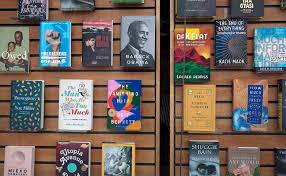In the past, getting a book published was like climbing a mountain. You had to find a literary agent, wait months for replies, and then hope a publisher would accept your work. But now, writers are taking control. Thanks to self-publishing, you can share your book with the world—on your own terms.
Here’s everything you need to know to publish your book by yourself.
1. What Is Self-Publishing?
Self-publishing means publishing your book without using a traditional publishing company. You, the author, are in control of everything: writing, editing, designing, printing, and marketing. Platforms like Amazon Kindle Direct Publishing (KDP), Draft2Digital, and IngramSpark make this process easy and affordable.
2. Why Choose Self-Publishing?
There are many reasons why writers are choosing the self-publishing route:
-
Creative control: You decide the cover, the title, the content—everything.
-
Faster publishing: You can publish your book in weeks, not years.
-
Higher royalties: You keep more of the money from each sale.
-
Global reach: Your book can be available worldwide through platforms like Amazon.
3. Steps to Self-Publish Your Book
Let’s break down the self-publishing process into clear steps:
a. Write and Edit Your Manuscript
This is the most important part. Make sure your book is well-written and professionally edited. You can hire a freelance editor or ask trusted beta readers for feedback.
b. Design a Great Book Cover
People do judge a book by its cover. Hire a graphic designer or use tools like Canva or Adobe Express to create a professional-looking cover that fits your book’s genre.
c. Format the Book Properly
Your book needs to be formatted for both print and eBook versions. Tools like Atticus, Vellum (Mac), or Reedsy can help you with formatting.
d. Choose a Publishing Platform
Some popular self-publishing platforms include:
-
Amazon KDP—Best for Kindle eBooks and paperbacks.
-
IngramSpark—Great for print books in bookstores.
-
Draft2Digital—Useful for wide eBook distribution.
e. Upload and Publish
Once your book is ready, upload it to the platform. Set your price, enter book details, and hit publish!
4. Marketing Your Book
Publishing is only the beginning. You need to promote your book to reach readers. Here’s how:
-
Build an author website or blog
-
Use social media (Instagram, Twitter, LinkedIn, TikTok)
-
Run Amazon or Facebook ads
-
Ask for reviews from readers and bloggers
-
Offer free chapters or limited-time discounts
5. Costs Involved in Self-Publishing
Self-publishing isn’t free, but it’s more affordable than you think. Here’s what you might pay for:
-
Editing—$200–$1,000 (depending on the length)
-
Cover Design – $50–$500
-
Formatting—$50–$200
-
ISBN (if not using a free one)—$0–$125
Some platforms like Amazon KDP provide a free ISBN and publishing tools, helping reduce costs.
6. Common Mistakes to Avoid
-
Skipping editing: Don’t publish a rough draft.
-
Poor cover design: Your cover sells the book—don’t go cheap here.
-
No marketing plan: You must promote your book consistently.
-
Ignoring formatting: A badly formatted book drives readers away.
7. Success Stories That Inspire
Many bestselling authors started as self-published writers. Here are a few:
-
E.L. James (Fifty Shades of Grey)
-
Andy Weir (The Martian)
-
Hugh Howey (Wool series)
These authors gained huge audiences—and even movie deals—by self-publishing their work.
Conclusion: Take Control of Your Writing Journey
Self-publishing gives you freedom, control, and opportunity. Whether you’re writing fiction, poetry, self-help, or a memoir, your story deserves to be shared. With the right tools and mindset, you can publish your book and build a loyal audience—all without a traditional publisher.
So, why wait for someone else to approve your dream? Start your self-publishing journey today.

